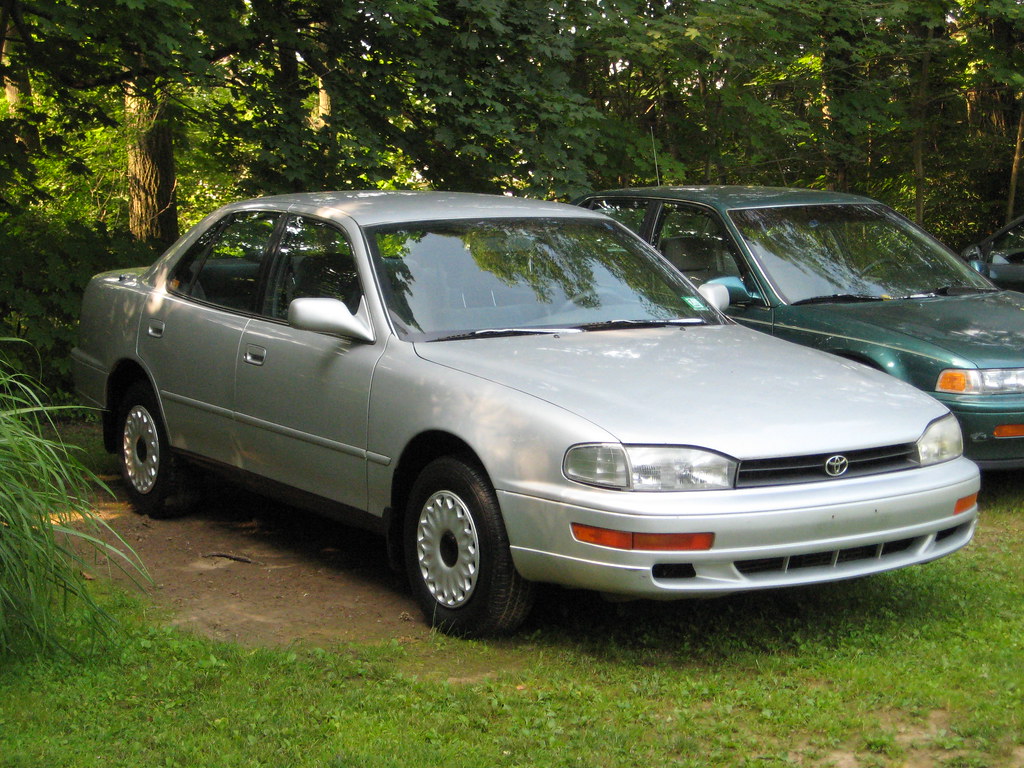I absolutely hate “smart” TVs! You can’t even buy a quality “dumb” panel anymore. I can’t convince the rest of my family and friends that the only things those smarts bring are built-in obsolescence, ads, and privacy issues.
I make it a point to NEVER connect my new 2022 LG C2 to the Internet, as any possible improvements from firmware updates will be overshadowed by garbage like ads in the UI, removal of existing features (warning: reddit link), privacy violations, possible attack vectors, non-existent security, and constant data breaches of the manufacturers that threaten to expose every bit of personal data that they suck up. Not to mention increased sluggishness after tons of unwanted “improvements” are stuffed into it over the years, as the chipset ages and can no longer cope.
I’d much rather spend a tenth of the price of my TV on a streaming box (Roku, Shield TV, etc.) and replace those after similar things happen to them in a few years. For example, the display of my OG 32-inch Sony Google TV from 2010 ($500) still works fine, but the OS has long been abandoned by both Sony and Google, and since 2015-16 even the basic things like YouTube and Chrome apps don’t work anymore. Thank goodness I can set the HDMI port as default start-up, so I don’t ever need to see the TV’s native UI, and a new Roku Streaming Stick ($45) does just fine on this 720p panel. Plus, I’m not locked into the Roku ecosystem. If they begin (continue?) enshitifying their products, there are tons of other options available at similar price.
Most people don’t replace their TVs every couple of years. Hell, my decade old 60-inch Sharp Aquos 1080p LCD TV that I bought for $2200 back in 2011 still works fine, and I only had to replace the streamer that’s been driving it twice during all this time. Sony Google TV Box -> Nvidia Shield TV 2015 -> Nvidia Shield TV 2019. I plan to keep it in my basement until it dies completely before replacing it. The Shield TV goes to the LG C2 so that I never have to see LG’s craptastic UI.
Sorry, just felt the need to vent. Would be very interested in reading community’s opinions on this topic.
the smartshitification of TVs is annoying, and i too hate being tracked by every device i use. That said, the incredible value of these TVs can’t be overstated. Most people can’t or won’t spend more than $500 on a TV, so most people would still be using 1080p displays if it wasn’t for this phenomenon, but now EVERYONE gets to have a 4k TV because the price is partially subsidized by all those ads you’re seeing.
I think it’s probably a net negative for society overall, but just wanted to point out that there is an upside to all those ads.
I found this comment funny because I’m still using 1080p TVs in the house. Mostly because after we got them I cut the cord and couldn’t even remotely stay under the Comcast cap with 4k. Even after I moved on to T-Mobile home internet, uncapped for now, I haven’t upgraded because there really hasn’t been a pressing need. Hell, cable and streaming don’t actually deliver 1080p, it usually is 720p max. I have no idea if the 4k options actually broadcast in 4k vs a smaller resolution.
honestly you’re playing it smart. I can’t speak to cable, but you are right that streaming apps don’t exactly justify the bump in resolution. The image they spit out to your screen is 4K, but the compression required to stream in 4K means that most of the added details are just crushed by the format. So ironically, you don’t really benefit from 4K unless you use Blurays, at which point you don’t really need any of the “smart” features of your 4K tv.
The compression issues are true for 1080p too, any dark scene on Netflix gets some horrible color banding and artifacts.
Ironically, the pirates don’t have that issue as their multi-gig torrents don’t have much compression compared to the some-hundred megs stream provided by Netflix
deleted by creator
Don’t connect it to the network. Sadly best you can do.
I got a display signage TV. Totally dumb. The only app it has is YouTube and that’s optional. I don’t even have the internet hooked up to it. Works fine for gaming and occasionally streaming via other devices.
Where do you even get something like that?
I got mine through Amazon. Samsung makes the cheapest ones I’ve found. Just search for something like “samsung commercial TV”. They’re generally a little more expensive than your ad/data harvesting-supported TVs but if you value your privacy and longevity of your devices, it’s worth it.
Also, these industrial monitors have better heat sinking from the LED backlight, which increases power efficiency and service life – the two metrics their intended buyers care most about.
deleted by creator
I am using a Sony TV that is not connected to the Internet and i stream stuff using a PS4. TV does not complain. Does anyone know if PlayStation is analyzing the data the same way Samsung does for example? So far there is no adds in PlayStation.
If they can, they probably are.
Yep, they’re horrible. I always disable internet on them, uninstall any apps I can, and generally do what I can to avoid using the built-in smart TV, but I shouldn’t have to do this, its unfortunate and sucks to deal with. They just take advantage of consumers who don’t know better, wish the TV market wasn’t like this. :/
You can’t find a decent quality standard TV? Why?
Have you tried in the past few years? They basically don’t exist anymore in the consumer space.
Yes I have and I can go to my local supermarket and get a conventional LCD with no “smart” function.
I won’t be buying a brand name most probably but I can buy a conventional LCD tv.
You can find fairly large computer monitors, and some monitors have built in speakers. That’s about the best you can do.
I finally looked in the settings and found I can set my roku tv to not start in the smart menu and it is immediately better for me.
all cars are headed there too… so very soon you won’t be able to get news or transportation without someone else’s permission…
Please drink a confirmation mountain dew to activate your air conditioner. Sorry, we didn’t hear the sound of the can opening, please open another where the microphone can hear it. Sorry, our servers are down, we apologize for any inconvenience this may be causing. Sorry, getting your family out of the vehicle is an optional feature which you have not subscribed to, please say “Do the Dew” to get temporary access to the friends and family doors. Sorry, I didn’t get that, please say “Do the Dew”. Sorry, I still didn’t get that, please call customer service at 1800-luv-cars to give your ad consumer confirmation phrase to a customer service representative.
I mean you have technically always needed a drivers license to drive which I would classify as “needing someone else’s permission.”
The bus on the other hand?
need permisson for the bus too. “exact change only!!”
it sounds like you’ve already surrendered your right to transportation… that license is something that i hold myself to and others… that’s the way citizenship works… i don’t ask for permission… i agree to abide by minimum functional requirements because i expect others to as well, and carry proof… you are confused…
if you think getting your driver’s license is “asking the government for permission” you are already a slave
I mean you have technically always needed a drivers license to drive
No you don’t. They still work even if you don’t have one.
Hell, the keys turn in the ignition even if you’re drunk.
Actually I think a lot of people do upgrade their TVs somewhat often, as stupid as that is. I will be clinging to my dumb TV for dear life as long as possible, but I feel like people are very consumerist these days. TVs have gotten cheap enough that they feel able to.
It goes without saying that no one should have to buy a new TV because there is a bunch of trashy software on it, but I’m sure it’s already happened enough to incentivise these assholes’ bad behavior
Most digital signage displays are ‘dumb’ tvs
Sony Bravia models now give you an option to make it a dumb TV as part of the out of the box experience. It’s the first question they ask you when you power it on.
Wait, really? Is this also the case for older models? I have one but it’s already a few years old. 🤔
My X950H does not give the option (although there is a hidden dev/“pro mode” that allows you to turn it into a dumb screen I think) but my newer A80J model does give the OOTB option to disable the smart features.
The Bravias with Google TV are at the absolute limit of what I will tolerate from a smart TV. Suggestions/tailored stuff on the Home Screen, but no invasive ads. Anything further and I’d turn them into dumb TVs and use an Apple TV or Google TV dongle instead.
I’m looking to buy a new TV soon ish and I’m really afraid of ending up with something with a ton of pre installed bloatware, simply because that’s the industry standard nowadays. If anyone has any tips for “dumb” TVs in the ~€600/$650 price range I’d love to hear them. I have a chromecast for streaming and it works fine, so I’m really just looking to buy a large screen without bloatware, no Internet connection required, etc. That’s what my current ~10 year old TV does and tbh I just want the same thing but better picture quality.
I commented above but this part may help:
Thinking more about it using eBay’s boolean search options may have helped drill down to good choices.
I too am in the market for a new tv. I’ve had my 60 inch plasma tv from Samsung for going on 12 years. I dropped a pretty penny on it from Best Buy at the time and haven’t had any problems with it at all for over a decade!
Only in the last year or so I’ve started having issues with turning it on if it was just turned off. Like it’s plasma so I’ve always been super careful of burn in of images. So I press pause on whatever I’m watching on the Roku streamer connected by HDMI. Then I turn off the tv itself. If say I’m running to the bathroom, when I get back and attempt to turn on the tv it’ll make the red power light blink randomly several times over and over… but it won’t initiate the start up of the screen…
I’ve tried lots of things… unplugged the tv and waited about 10-15 seconds and plugged it back in then pressed the power on the remote and it’ll usually come back on with the volume all the way back to “1” which stinks… but it still “works”…
I’m willing to pay a good amount for a plasma adjacent/similar tv just because of the luck I’ve had with this current tv. It makes more sense to me to invest in a really great tv now, as opposed to replacing several less great tv’s when they inevitably break down…
I’ve been looking around, and obviously they’ve stopped producing Plasma tvs now… so I’m still searching for a plasma like tv that I want…
What you want to look for is a “digital signage display” or “commercial display” like this one. These are basically just large monitors. They generally have really good display quality because they’re intended to make products look good, and near-bulletproof electronics because they’re intended to be on all day. Because of this and not being subsidized by bloatware they tend to cost more than smart TVs of the same size.
That’s a great tip thank you!
I prefer Roku because it’s pretty trivial to block their ads and tracking, and I can add and remove channels and features pretty easily. Now if they started forcing me to have certain channels that would change. Plus you can use it as a dumb TV without connecting it to the Internet, and even set it to use an HDMI in by default so you never see the OS.
set it to use an HDMI in by default so you never see the OS
How long do you figure we have before manufacturers remove this functionality?
There’s lots of places like sports bars that send TV signals from a central location and need the TVs to stay on the selected input, so I don’t think we’ll see it go away entirely. It may move to displays that cater specifically to that use case, however.
I just never entered my Wifi details into my smart TV. I only use the HDMI inputs on it anyway, so it behaves like a dumb one. It’s a RCA TV from Walmart, if anyone is wondering.
As a lot of people here, I did the same, bought the smart TV, it needed internet for firmware upgrade, and once it had started and did not ask for my inputs or whatever, I selected the HDMI1 as startup, plugged a Chromecast. Then went into the TV menu to forget the network settings on the TV. It’s just a monitor used to cast Netflix, Disney, Plex, Prime, etc.
How is plugging in a Chromecast any different than using the same software built into a Google TV?
I don’t know for a Google TV, but others brands have microphone and ads in their builtin …
I use pi-hole to block tracking.
















